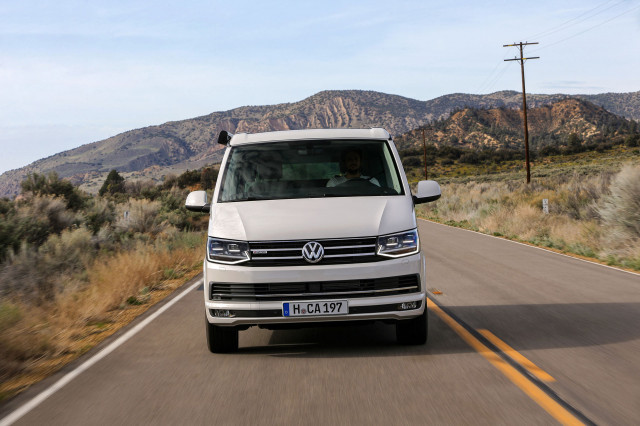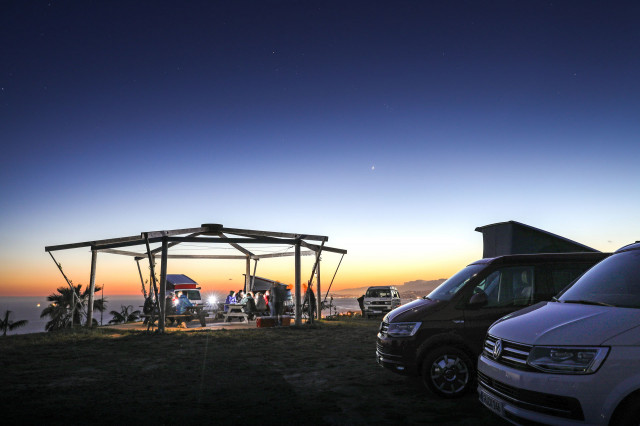2018 Volkswagen California first drive review: forbidden fruit you can live in
Our ideal garage is full of weird French hatchbacks, Japanese kei cars, German wagons, and Volkswagen vans. But as North Americans, we’re stuck admiring these wondrous oddities from afar.
Aside from the tragic Volkswagen Routan, the U.S. hasn't seen a new VW van since the Eurovan disappeared 15 years ago. And until the all-electric I.D. Buzz arrives, that's not likely to change.
It should. After three days and two nights living in one of VW's iconic camper vans (along with a short drive in a passenger-only Multivan), this is the forbidden fruit Americans should clamor for.
Living the #VanLife
We spent the bulk of our time with the Volkswagen California camper van, the king of VW's van range and a vehicle that looks like nothing else. It's tall and boxy, and looks right at home in the catalog of Volkswagen Commercial's European catalog.
Our tester, a range-topping California Ocean Red, wore retro wheels with heritage-inspired chrome lug covers and large Volkswagen logos—just like the camper vans that tooled along the Pacific Coast Highway in the 1960s. Instead of a prominent Volkswagen badge on the nose, the company's no-nonsense grille was flanked by LED headlights with premium-looking running lights. An extendable awning sat above the passenger's side rear door.
Inside, it doesn't take long to realize we could spend a week living with the California and not uncover all its secrets. Its ingenuity is endearing. Behind the driver's seat sit two cabinets with sliding doors, a sink, and a cooker. The California can carry nearly 8 gallons of clean water and 8 gallons of waste water, while the cooker runs off propane stored in a 6.2-pound tank. Aft of the cooker is a deep refrigerator with 1.5 cubic feet of space and seven separate temperature settings––it kept beer, Red Bulls, and other snacks cool throughout our three days of driving/camping.
Between the fridge and the second-row sliding bench is a table that slides forward and pops out, so the backseat can serve as a desk or dining table, holding up a MacBook Pro and a bag of In-N-Out with equal ease. Both front seats rotate 180 degrees, although the table is too small to accommodate people in the front and back row at the same time.
As a desk, the table worked well. Even expanded, it's on runners for easy adjustment. A 12-volt outlet––one of many––is hidden just under the passenger's side of the rear bench and it’s where we plugged a power inverter for a laptop. The power inverter is a uniquely American need––all Californias carry an onboard inverter, but it outputs at a very European 230 volts.
The tall tailgate hides a zip-up compartment for a pair of camping chairs, while the single sliding door houses a pop-out table that doubles as a stylish insert. Lights and 12-volt outlets are everywhere. There's even a ribbon of LEDs integrated with the kitchenette, to create some luxurious ambient light.
But it's the two twin beds that are the heart of the California. While neither is especially comfortable, they beat sleeping on the ground or even with a decent sleeping pad. And importantly, deploying either bed is a painless procedure.



Email This Page